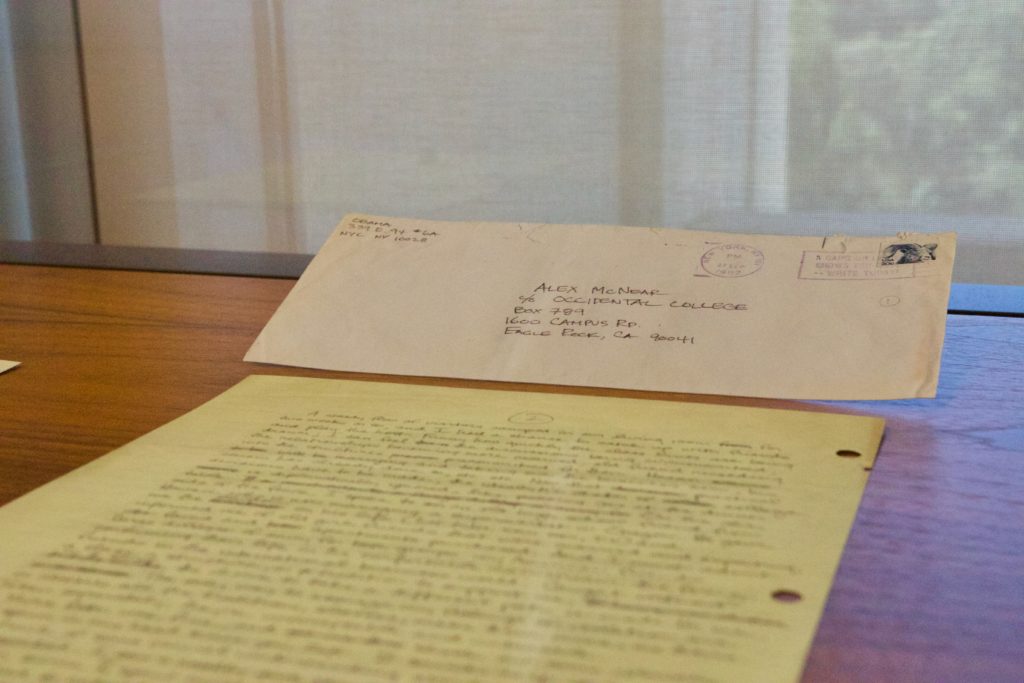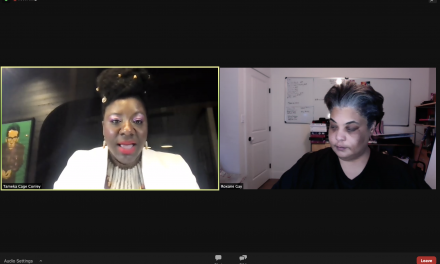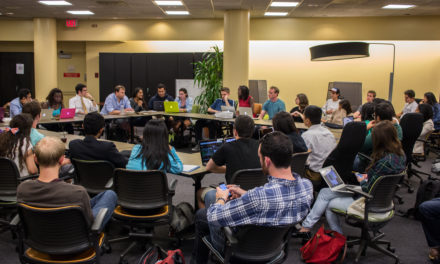“Moments trip gently along over here,” a young Barack Obama writes.
Obama, then a college student, writes a letter in the winter of 1983 to his then-girlfriend, Alexandra McNear, detailing his usual routine at Columbia University: running on the indoor track, eating “the best bran muffin in New York City,” studying in the library.
The former president’s letter, alongside eight other letters to McNear acquired by Emory University’s Rose Library, reveals more than his day-to-day collegiate life. The missives also disclose the musings of a young man discovering his potential and passion for enacting change in the world.
“Life longs to be understood, Alex, but it contains mechanisms, sometimes sharp and cruel, sometimes a wide wash of mundane, to keep one from getting too close,” Obama writes.
A private individual provided the nine letters, dated between September 1982 and April 1984, to the University, according to Rose Library Director Rosemary Magee. McNear was a student at Occidental College (Calif.), where the pair had met. Obama had attended Occidental from 1979 to 1981 before he transferred to Columbia.
Emory acquired the letters in 2014 from a private individual with whom Emory mutually agreed to wait until 2017 to announce the acquisition. Magee declined to provide more information about the acquisition, citing confidentiality.
Neat cursive discussing topics from economic inequality to monogamy adorns the sheets of paper. Among the sentences lie the occasional crossed-out word or misspelling. In the margins of some of the letters, brief annotations, most likely from McNear, according to Magee, answer Obama’s questions and react to his thoughts.
“I care for you as yourself, nothing less, but also nothing more. Does this anger you?” Obama asks on Sept. 1, 1983. “No” is jotted down in the left margin.
A political science student, Obama at times became frustrated “studying men and their frequently dingy institutions.”
He instead found refuge in a physics course, calling it a “creative escape.”
“[He] sees that physics has implications for international relations and nuclear policy,” Associate Professor of Political Science Andra Gillespie said. “It’s probably not surprising that he ended up with a physicist as his secretary of energy.”
Gillespie, who is working on a book about the former president, said the letters provide insight into Obama’s values and how he grappled with ideas that later shaped his politics.
In the letters, “[Obama’s] thoughts about feminism and socialism emerge … and you can see his racial identity kind of forming, especially when he talks about his work experience,” Gillespie said. “You can see someone who’s really striving to be egalitarian. He’s intellectually egalitarian, but he also was trying to figure out, ‘OK, what does that look like in practice?’”
Obama, a self-proclaimed feminist and advocate of women’s rights, writes to McNear that she doesn’t have to conform to people’s expectations of her, Gillespie added.
The former president sent McNear a copy of a review of “Becoming a Heroine,” a book that discusses the portrayal of women in novels. Now the father of two daughters, Obama established the White House Council on Women and Girls and signed the Lilly Ledbetter Fair Pay Act during his presidency.
In the letters, the beginning of Obama’s formation of his racial identity emerges. The young Obama describes the growth he experienced during a weeklong job supervising people moving files of the Manhattan fire department to a new building.
“I felt a greater affinity to the blacks and Latinos there (who predictably comprised about three-fourths of the work force there) than I had felt in a long time, and it strengthened me in some important way,” Obama writes on Nov. 15, 1983.
Fresh out of college at the time, he was strapped for cash because community organization salaries were too low, he explained.
“One week I can’t pay postage to mail a resume and writing sample, the next I have to bounce a check to rent a typewriter,” he writes.
Throughout the letters, Obama exhibits a high level of intellectual curiosity, Gillespie said. He references T.S. Eliot and quotes William Butler Yeats’ poem “The Tower.”
“You can read these letters and tell this guy is brilliant,” Gillespie said.
Gillespie said Magee had reached out to inform her about the letters’ presence at Emory a few weeks ago. When Gillespie read the pieces, she said she realized she could use some of the material in her book.
“I’m finishing the book by talking about what President Obama’s legacy looks like given the fact that he’s proceeded by Donald Trump,” Gillespie said. “Given some of the public writing that President Trump has done as well, there’s a nice comparison about what their views on education are based on … how Obama is describing [his academics] and based on how President Trump described his approach to school in ‘The Art of the Deal.’”
Facsimiles of the letters will be on display at the Rose Library during the Fall 2017 semester and possibly beyond, Magee said. The letters are also available for viewing by appointment at the Rose Library. A special viewing of facsimiles was held Oct. 20 from 2 to 4 p.m. in the Woodruff Commons of the Rose Library.
“[The writings] are the questionings and inner dialogue of a young man trying to find a place in the world,” Magee said. “That’s also true of our own students.”
Obama, in the winter of 1983, shared with McNear the concerns he felt about how he, as a young man about to graduate, should begin to shape the rest of his life. The young student observes the people around him, the ones searching for direction and security, and those being molded to fit society’s expectation.
“But our lives are fluid, not static, and I can see and taste the possibility of switching gates, channeling the energy toward something of vitality and dignity,” he writes. “But people are busy keeping mouths fed and surroundings intact.”
The man who would become the 44th president of the United States continues, “It is left to the obsessed ones like us to make the alternatives more tangible, the contours of life’s possibilities more defined, so that resistance and destruction rise in the form of creation.”
Madison Bober, Valerie Sandoval, Christina Yan, Alisha Compton and Richard Chess contributed reporting.
Correction (10/21/17 at 6:50 p.m.): The article originally stated that the author is Richard Chess. Michelle Lou is the correct author. The article has been updated.
Michelle Lou (19C) is from Irvine, Calif., majoring in political science and minoring in East Asian studies. She previously served as copy chief, news editor and executive editor. She won first place in the 2017 Georgia College Press Association’s Better Newspaper Contest in the category Best News Article Based on Investigative Reporting for her coverage of the Spring 2017 student government elections. Outside the Wheel, she is an undergraduate research fellow at Emory’s Center for Law and Social Science; a member of Phi Eta Sigma, Omicron Delta Kappa and Pi Sigma Alpha; and an avid snorkler. She has interned at USA TODAY's copy desk and HuffPost's breaking news team.







